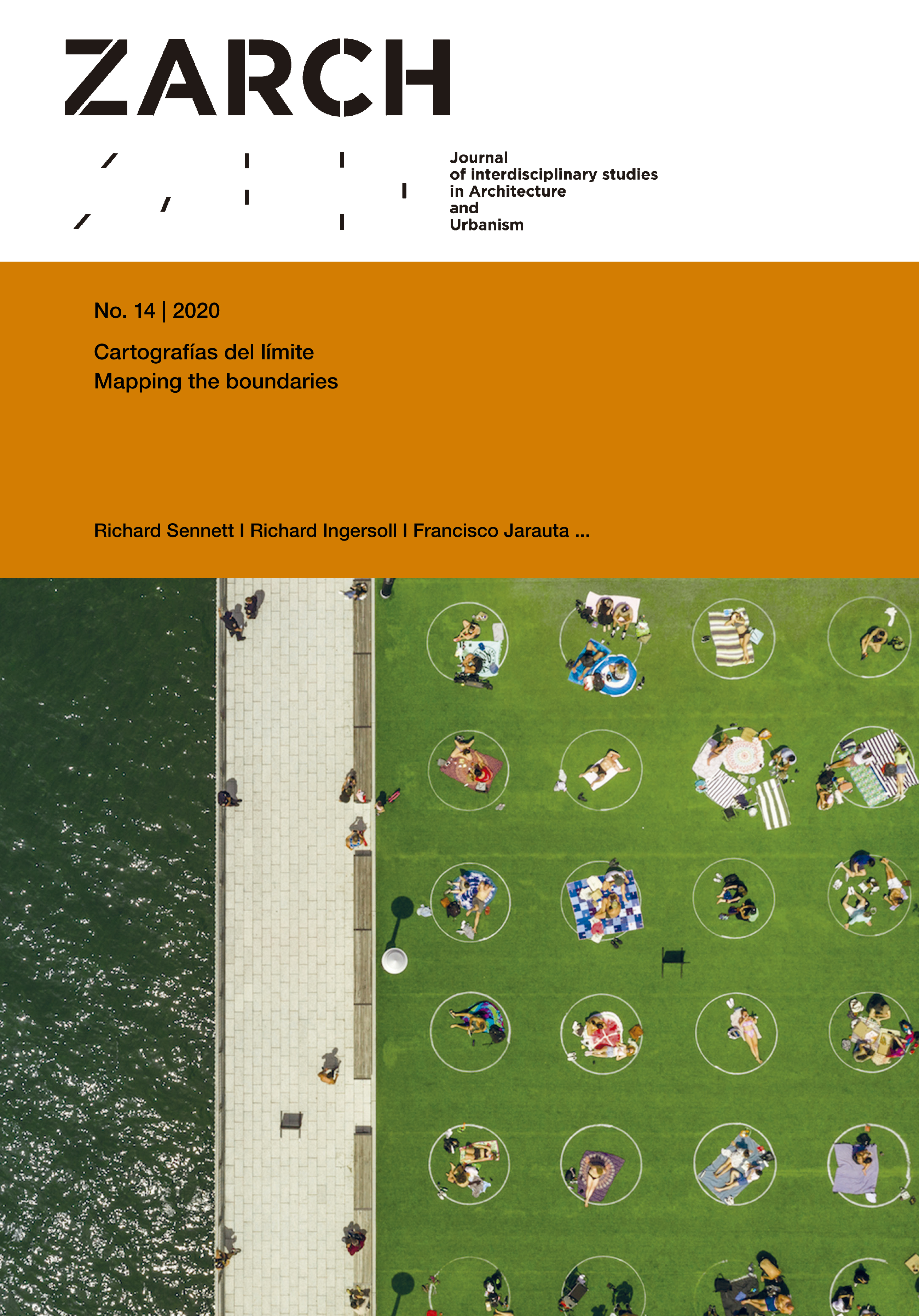Liminality and communitas. The blurring of urban order in the Neigbourhood Unit of El Taray
DOI:
https://doi.org/10.26754/ojs_zarch/zarch.2020144299Keywords:
El Taray, Liminality, Communitas, Housing, Cooperative, ThresholdAbstract
The Neighbourhood Unit of El Taray (Segovia, 1962-1964) was commissioned by the Cooperative Pius XII for an sloped site on the north-east edge of the citadel of Segovia. Given its fragmented layout around collective spaces as well as the way it makes use of aerial connections and galleries, the complex has been typically linked with the British Neobrutalism and the experiences of Team 10. However, beyond its adherence to a certain movement, we can state that El Taray is the consequence of a pressing need for adaptation to topography, to functional requirements and to material scarcity. These conditions will challenge the creativity of the young Aracil motivating him to devise a good number of advanced design solutions that sixty years later still prove their freshness and relevance. Notable among these is its socio-spatial scheme, an intricate network of significances and circulations that blurs the housing complex between the exterior and the interior, the distant and the close or the collective and the individual. This paper seeks to overcome the traditional reading of El Taray —from the idea of typology or the assimilation to contemporary architectural movements— to present a critical update that emphasizes its liminal condition as key for its social, material and urban sustainability. To this end, El Taray is linked to the present by being analysed from the notion of habitable system that spreads its influence to the community that lives in it and to the context in which it is inserted.
Downloads
References
Aracil, José Joaquín. 1972. Principio y fin de una utopía. Arquitectura 166 (septiembre): 49-53.
Banham, Mary et al. (Eds). 1996. A critic writes. Selected essays by Reyner Banham. Berkeley-Los Angeles: University of California Press.
Benévolo, Leonardo. 1987. Historia de la arquitectura moderna. 6ª Ed. ampl. Barcelona: Gustavo Gili.
Campaña, Esperanza. 2017. La vida entre. Unidad Vecinal de El Taray. Segovia, 1962-1964. Tesis Doctoral. Departamento de Proyectos Arquitectónicos, Universidad Politécnica de Madrid.
Capitel, Antón. 1986. Arquitectura española, años 50 – años 80. Madrid: Ministerio de Obras Públicas.
Delgado, Manuel. 2005. El elogio del afuera. Lo urbano como sociedad sin asiento. Arquitectos 176: 47-52.
Fundación Docomomo Ibérico. 2013-2014. Redacción de la documentación de 256 elementos del catálogo inicial de edificios del Plan Nacional del Patrimonio del Siglo XX. Tomo II: Castilla La Mancha, Castilla y León y Cataluña. Noviembre 2013-Mayo 2014.
Gehl, Jan. 2001 [1971]. Life between buildings: Using public space. Copenhague: Arkitektens Forlag.
Goycoolea, Roberto (Ed.). 2014. Modernidades ignoradas. Indagaciones sobre arquitectos y obras (casi) desconocidas de la arquitectura moderna. Madrid: UAH-RNIU.
Hajer, Maarten A. y Reijndorp, Arnold. 2001. In search of new public domain. Analysis and strategy. Róterdam: NAi.
Hertzberger, Herman. 2005. Lessons for students in architecture. Róterdam: 010.
Ion, Jaques. 1975. Production et pratiques sociales de l’espace du logement, Saint-Étienne: Cresal.
Márquez, Víctor. 1968. De la utopía a la realidad. La ciudad en el espacio. Triunfo 341 (14 de diciembre): 39-51.
Newman, Oscar. 1972. Defensible space: People and design in the violent city. Londres: Architectural Press.
Smithson, Alison (Ed). 1974. Team 10 primer. Cambridge-Londres: MIT Press.
Solà-Morales, Ignasi et al. 1998. Guía de arquitectura. España. 1920-2000. Sevilla-Madrid: Tanais.
Teyssot, Georges. 2008. Aldo van Eyck’s threshold: The story of an idea. Log 11 “Observations on architecture and the contemporary city” (Invierno): 33-48.
Theunissen, Karin. 2009. The private-public paradox of the new open space. DASH 01 New open space in housing ensemble, 54-73. Róterdam: NAi.
_____. 2006. Re-opening the Dutch city block: recent housing projects as experiments in the public domain. Architectural Research Quarterly vol. 10, nº3/4: 203-220.
Viviendas de la Cooperativa Pío XII en Segovia. 1968. Hogar y Arquitectura 74 (enero-febrero): 58-59.
Whyte, William H. 1980. The social life of small urban spaces. Nueva York: Project for Public Spaces.
Wirth, Rafael. 1969. La ciudad en el espacio, una solución para los problemas de las grandes urbes. La Vanguardia, 11 de marzo.


